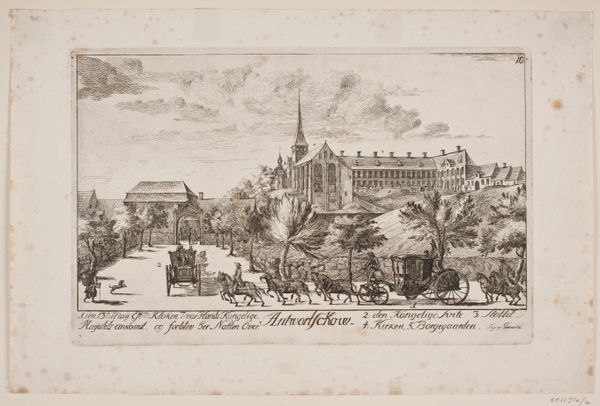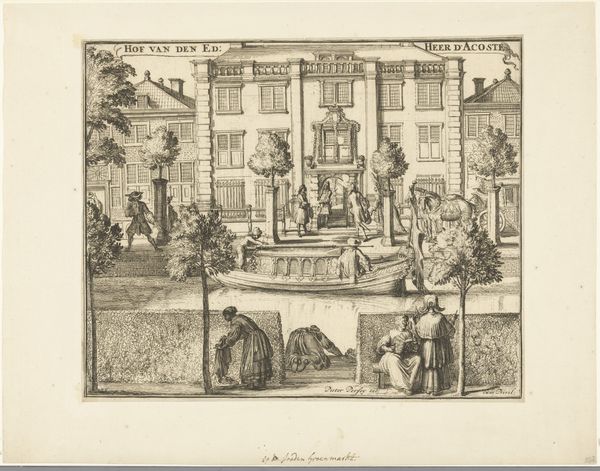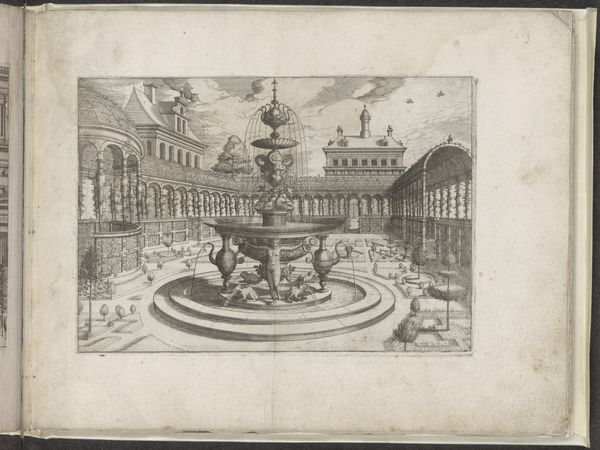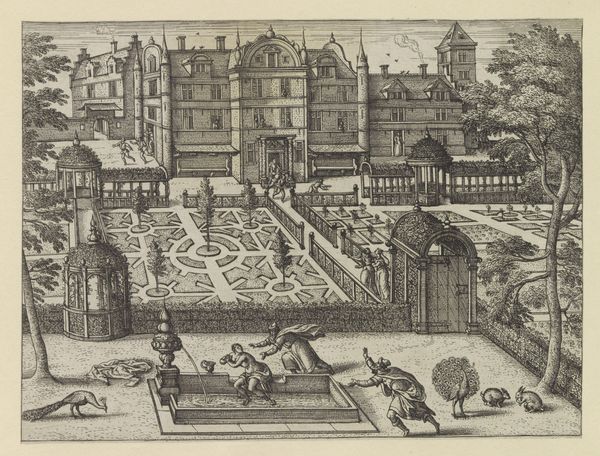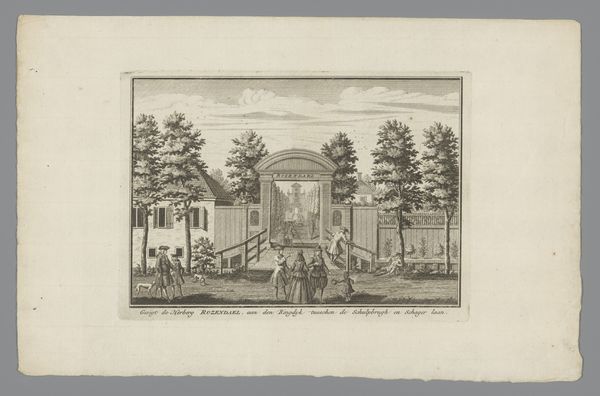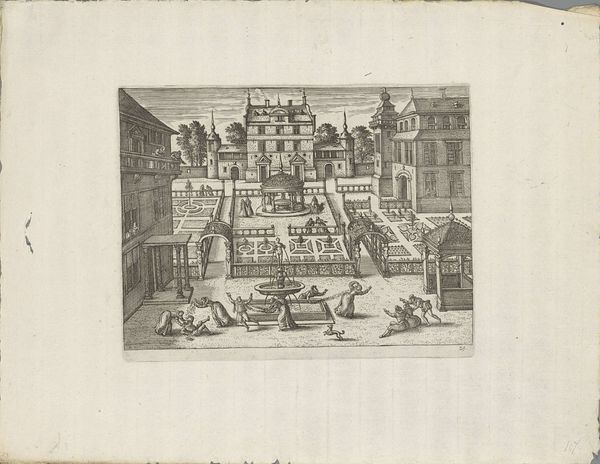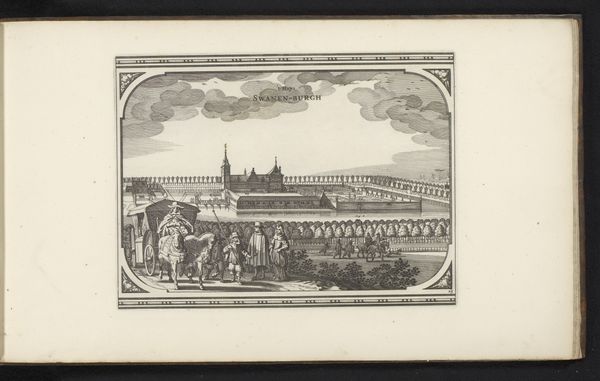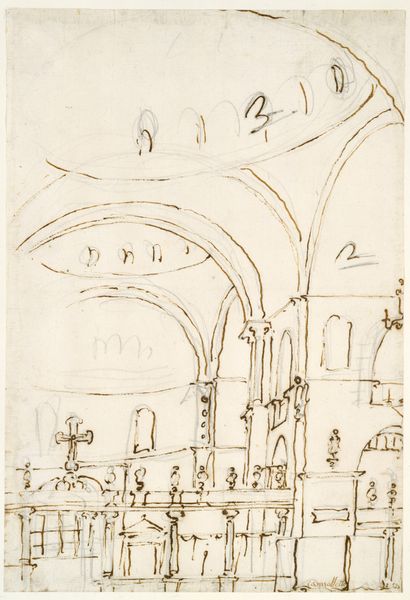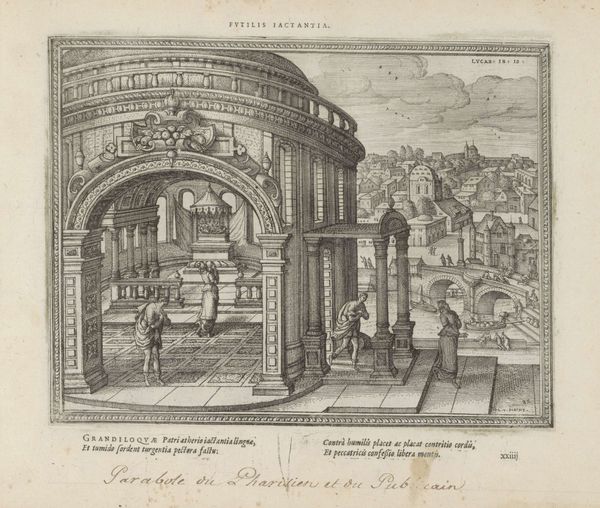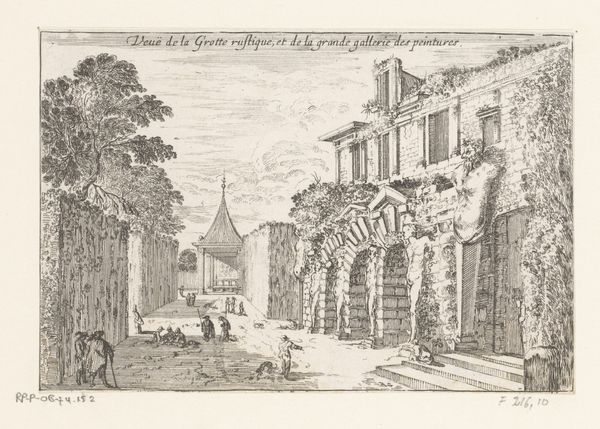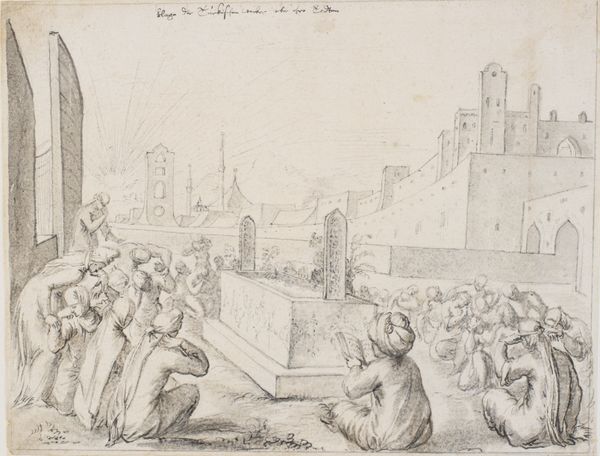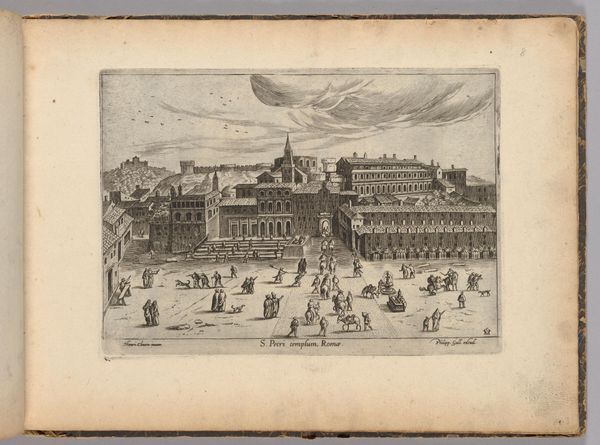
drawing, print, ink, pen
#
drawing
#
narrative-art
#
baroque
# print
#
ink
#
pen
#
cityscape
#
history-painting
#
academic-art
Dimensions: 6-5/16 x 7-1/4 in. (16.0 x 18.4 cm)
Copyright: Public Domain
Curator: This drawing, titled "Auto-da-fé in a Courtyard," is attributed to Sebastián de Herrera Barnuevo and dates sometime between 1619 and 1671. It’s executed in pen and ink. Editor: It feels stark. The monochromatic wash lends a grim mood, and the sharp architectural lines almost box in the figures, amplifying the feeling of confinement. Curator: Exactly. It depicts an "auto-da-fé," a public penance ritual, complete with tiered seating for spectators, condemned figures on display, and a central stage for pronouncements. Notice how Herrera Barnuevo uses line and wash to distinguish between these separate areas. It is an historical record. Editor: Historical, certainly, but also a searing indictment of power structures. The composition deliberately emphasizes the architecture surrounding the event, a stark reminder of institutional control, a display of power using a man-made building. The labor involved in constructing the tiered platforms, the executioner's platform. Consider also the clothing of those passing judgement as opposed to those being judged! The very clear class boundaries highlighted here. Curator: The meticulous detailing of the architecture does provide context. The materials—pen and ink—chosen offer precision for recording those details. But beyond a social critique, isn’t there also an interest here in the sheer craft? The cross-hatching, the ways in which he depicts space are remarkable. The very construction of this artwork allows the creation of social critique and memory through its rendering of this historical spectacle of domination. Editor: I see what you mean, the labor of creating the work itself is notable! Yet I find it hard to separate the artistic process from the historical gravity it depicts. It highlights how art can act as a tool for recording violence. Consider, the sheer scale of it, the way the pen and ink mimics the crisp uniformity they're attempting to impose, the way everything is delineated! Curator: A fair point. I suppose looking at process only addresses part of the intention, while looking at class dynamics doesn't explain how those realities have been physically transformed into the drawing's elements of texture and depth. Editor: Precisely, to explore only medium overlooks a deeper, difficult cultural reality. Still, there’s something undeniably compelling in how art preserves such layered historical events for continued reflection, both aesthetically and sociopolitically.
Comments
No comments
Be the first to comment and join the conversation on the ultimate creative platform.
